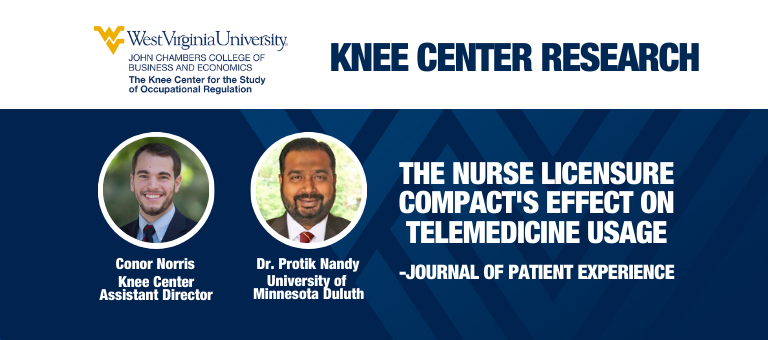
Goat Glands versus Polio Vaccine: Finding the sweet spot in occupational regulation
June 14, 2023
What Are the Effects of Allowing Undocumented Immigrants to Earn Occupational Licenses?
June 29, 2023Abstract
As a result of a shortage of primary care physicians, considerable portion of patients in the US have difficulty accessing primary care. Telemedicine allows healthcare professionals to reach patients in shortage areas, but state-based occupational licensing laws make interstate practice difficult. The Nurse Licensure Compact (NLC) was designed to improve interstate practice for Registered Nurses (RNs), including telemedicine. Our preliminary analysis does not find evidence that the NLC is able to significantly increase telemedicine usage from out-of-state providers. Policymakers cannot rely on just the NLC to encourage the adoption of telemedicine; other regulations currently limit its adoption.
Key Points
• The shortage of primary care physicians and nurses reduces patient access to primary care.
• State level licensing laws create a regulatory barrier to practice across state lines.
• The NLC is designed to make it easier for RNs to treat patients in other states.
• Preliminary analysis suggests that the NLC is not able to significantly increase telemedicine usage from out-of-state providers among patients.
Introduction
The US is facing a shortage of primary care physicians, which makes access to care difficult for patients.1 These shortages are concentrated among rural areas and urban Medicaid populations. Registered nurses (RNs) are valuable members of the healthcare delivery team that work closely with patients. However, regional shortages do not allow us to rely on RNs to provide access to primary care.2 Healthcare systems will need to harness healthcare professionals from outside their states or even their regions to ensure access for patients.
One solution that can smooth regional shortages of nurses is the use of telemedicine. Telemedicine uses communication or monitoring technology to allow healthcare providers to evaluate, manage, or treat patients remotely. During the COVID-19 pandemic, when a large proportion of patients were forced to switch to telemedicine, many specialties saw lower satisfaction ratings; however, most of the issues were related to technology rather than the quality of care.3 Patients tend to be satisfied with telemedicine offered by outpatient clinics when freely chosen.4 While telemedicine cannot replace all traditional, in-person care, it can be useful for patients in certain situations.
Usage of telemedicine has grown in recent years, but its adoption has been slowed in part by regulatory policy. For instance, healthcare professionals must be licensed in the state that the patient is physically located. The Nurse Licensure Compact (NLC) allows RNs to practice in any compact state on one state license, which makes it easier to provide telemedicine—one of the goals of the NLC. Using 2019 insurance claims data from Change Healthcare, we compare telemedicine usage in states that have adopted the NLC to those that have not. On average, NLC states had a slightly higher average percentage of telemedicine usage from out-of-state providers, but the differences were not statistically significant.


